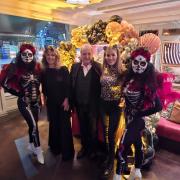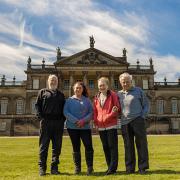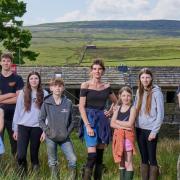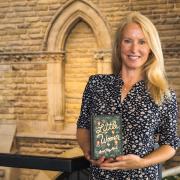Henry Freeman was one of the heroes of the sea as an RNLI volunteer on the Yorkshire coast. His story inspires a new musical portraying an ocean of heroism, undertaken by everyday people
From its northernmost to its southernmost point, the North Yorkshire coast is only around 45 miles long as the herring gull flies – yet it has four lifeboat stations, at Staithes and Runswick, Whitby, Scarborough, and Filey.
That concentration – there are nine lifeboat stations in total on the whole Yorkshire coast – is testament to the crucial role played on this coast by the Royal National Lifeboat Institution, better known as the RNLI, which celebrates its 200th anniversary this year. There’s an awful lot of tragedy, triumph and tales of derring-do packed into those two centuries and not-quite 50 miles.

When we talk about heroism in the lifeboat service around here, there’s one name that tends to crop up again and again: Henry Freeman.
Bridlington-born fisherman Freeman had a real baptism of fire. He was based at Whitby Lifeboat Station which had opened in 1802 – one of the earliest in the country. February 9 1861 was his first day as a crew member, and it just happened to also be the day a deadly north-easterly gale hit the area. The lifeboat was called out no less than five times throughout the day to rescue distressed vessels. On the fifth call-out, it capsized and 12 of the 13 crew were lost. Freeman alone survived, it’s believed because he was wearing a new design of cork lifebelt.
Freeman was awarded an RNLI Silver Medal for his valiant efforts that day, but his career was far from over – he took part in many more rescues, and in 1880, after another huge storm hit Whitby, was awarded a Silver Second-Service Clasp after launching the new self-righting lifeboat, the Robert Whitworth, four times in one day to vessels in distress.

A year later, he was involved in an epic rescue at Robin Hood’s Bay that saw the Robert Whitworth hauled by men and horses six miles overland through deep snowdrifts and then down the steep streets of Robin Hood’s Bay to the sea.
Freeman died in 1904 at the age of 68. He had retired from the lifeboat crew five years earlier after more than 40 years’ service, 22 of them as coxswain. It’s reckoned that he helped to save more than 300 lives in that time.
But while Freeman may be the most familiar name to many, he’s by no means the only life-saving hero around here.

Just up the coast at the Staithes and Runswick station, two crew members were awarded the Thanks of the Institution inscribed on Vellum in 1996. Sean Baxter received his for his role in the rescue of two people trapped on a ledge, while David Porritt was lauded for his part in a rescue which took place in darkness, safely bringing home two trapped anglers in danger of being swept away.
At Scarborough, John Owston was coxswain for 41 years, retiring in 1911. In that time, he contributed to the saving of 230 lives. Owston was awarded the Silver Medal in 1880 for his key role in the rescue of 28 lives in one 24-hour period when the lifeboat was launched five times.
Filey Helmsman Michael Farline was awarded the Bronze medal in 2004 after saving the lives of two swimmers at Reighton Sands. The odds were very much against him and his crew: the D-class lifeboat he was on grounded, almost capsized at one point, and was difficult to manoeuvre as she was swamped by sea water.

In this special year for the RNLI, we ask you to remember that the stories above just break the waves of an ocean of heroism, and all of it undertaken by ordinary, everyday people just like you and me. They give up their time – and occasionally their lives – to help others. Please support them if you can.
All of the stories in this feature, and many, many more, can be read in more detail on the history pages that cover every lifeboat station in the country on the excellent RNLI website: www.rnli.org
And if you want to know more about the lifeboat heroes of the North Yorkshire coast, you can find displays at all of the four lifeboat stations, and lots more information about Henry Freeman at Whitby Museum, including the famous portrait of him by Frank Meadows Sutcliffe. There is also a Lifeboat Room at Filey Museum, celebrating the lives of the brave volunteers of that small town.
Find out more at discoveryorkshirecoast.com
More events across the Yorkshire Coast and beyond at visitnorthyorkshire.com

Facing the Waves musical
Facing The Waves is a new musical from Whitby-based Dogwood Productions, the official theatre partner for the RNLI as it celebrates its bicentenary.
The show brings together Henry Freeman and a young mum, a character created from the real people the writers met while researching the show. In the present day, Faith comes from a family steeped in the same tradition, juggling family, career and crewing the lifeboat. Will it be going off to sea or will it be chips for tea?
Dogwood worked with the BBC to conduct numerous interviews with communities including in Whitby, Saltburn and Bridlington. They captured the memories, experiences and expectations of those living by the coast to create an authentic tale that encapsulates the dedication and heroism of the RNLI’s volunteers and the always present perils of the sea.
Facing the Waves tours Yorkshire throughout September. All performances are 7.30pm unless otherwise stated.
Friday 20, Saturday 21 (2.30pm and 7.30pm): Chapel on the Hill, Whitby
Sunday 22, The Robinson Institute, Glaisdale
Tuesday 24, Saltburn Arts, Saltburn
Wednesday 25, Selby Abbey, Selby
Thursday 26, Junction Goole, Goole
Friday 27 and Saturday 28, Hull Truck Theatre, Hull
Sunday 29 (7pm), Bridlington Lifeboat Station, Bridlington In October, the show moves to the North East and Lincolnshire – for more information and to book, visit dogwoodproductions.co.uk/boxoffice
You can also support the RNLI at the annual Staithes and Runswick RNLI charity auction. Hosted by BBC Bargain Hunt regular Caroline Hawley and held in the Cod and Lobster in Staithes, it takes place this year on December 29. And for more information on RNLI events across the county, visit rnli.org



























